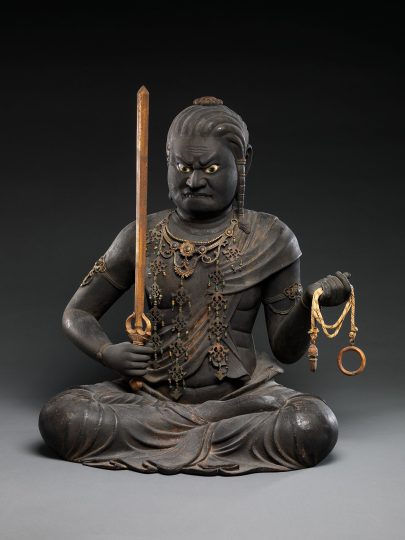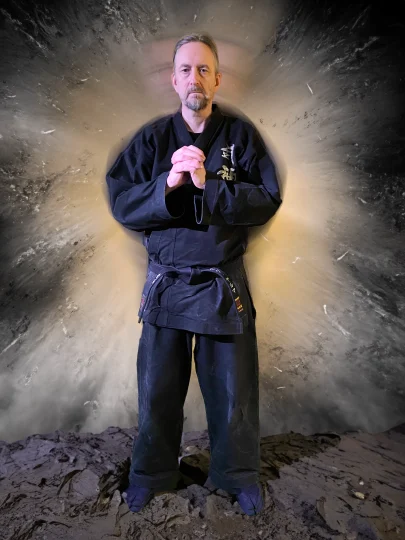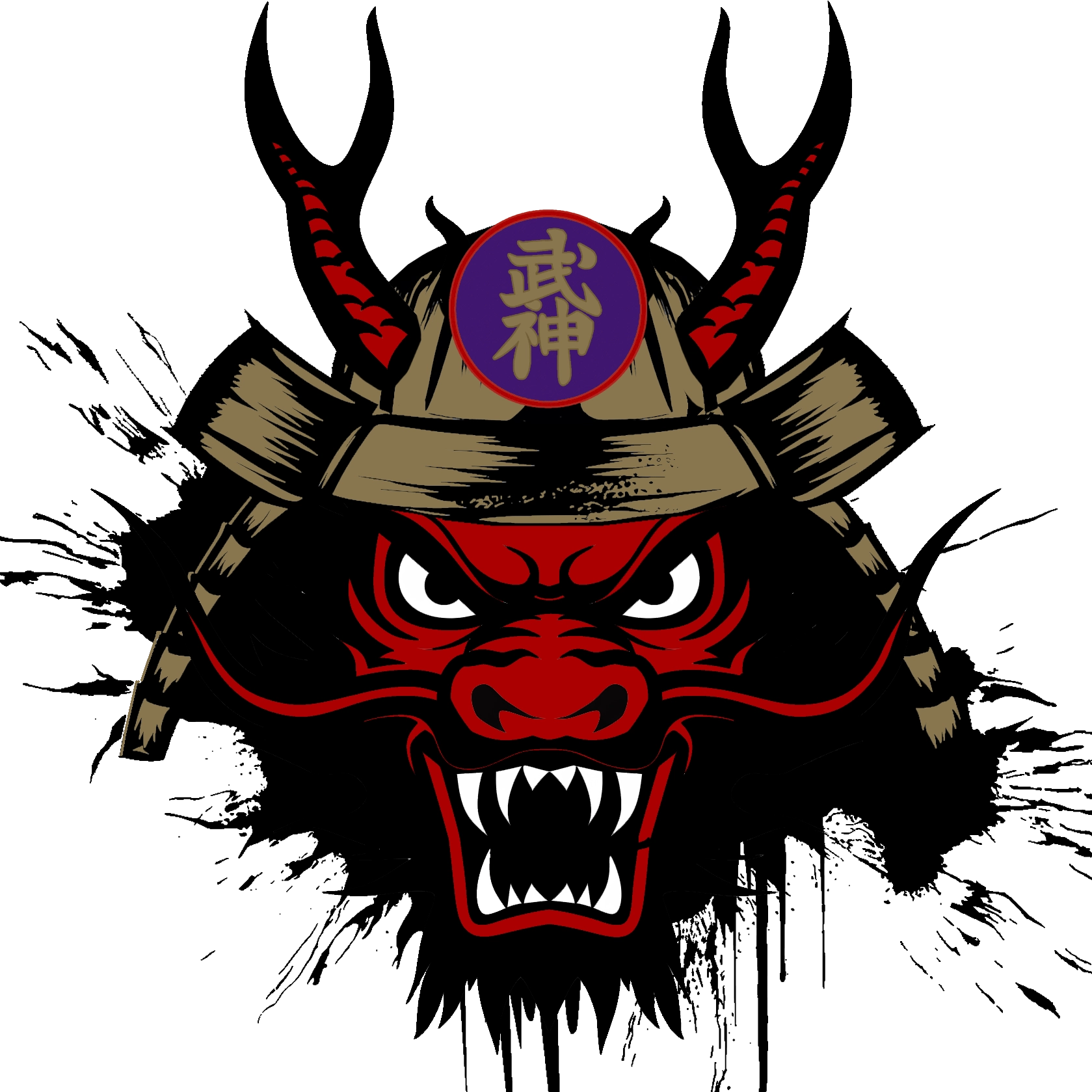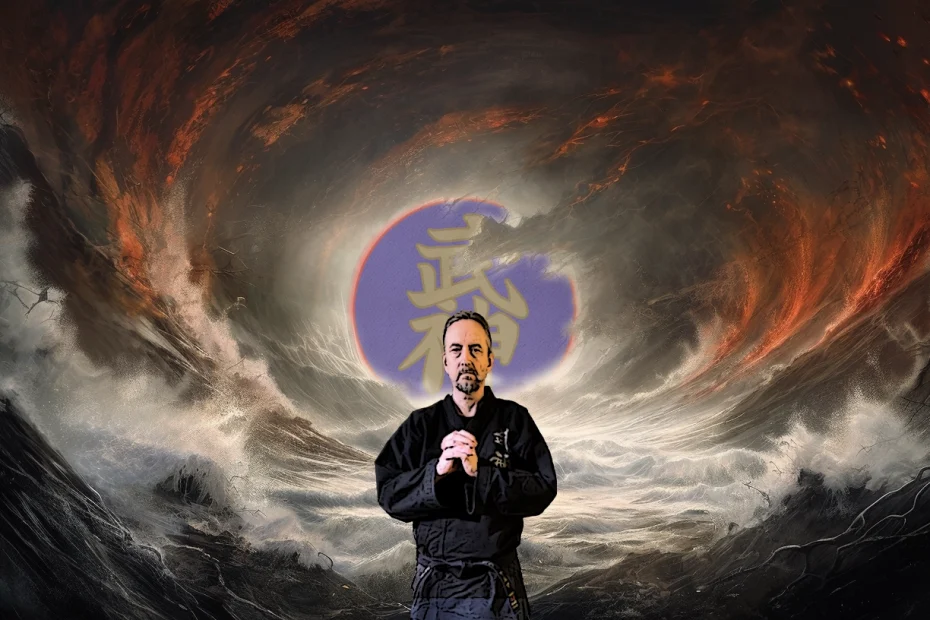In the world of martial arts, one concept stands out as the embodiment of inner strength and unwavering composure in the face of immediate danger: Mastering Fudōshin (不動心). This essay explores the Japanese concept of Fudōshin, delving into its significance for martial artists and the art of staying calm in perilous situations. Fear, often considered a negative emotion, is, in fact, a valuable ally that we must learn to control. This essay outlines the importance of fear, methods to prepare and train oneself to avoid freezing or panicking, and how achieving an equanimity state can lead to making life-saving decisions amid chaos.
The Essence of Mastering Fudōshin
Fudōshin, or “Immovable Mind,” is the cornerstone of martial arts philosophy. This concept has its roots in ancient Japan, where warriors, known as samurai, sought not only physical prowess but also mental fortitude. Fudōshin encapsulates the idea of maintaining inner peace and mental resilience, regardless of external circumstances. It is the ability to stay rooted, composed, and ready to act with precision and clarity even when faced with chaos and danger.

Fudō Myōō is found in Shingon Buddhism as a guardian deity, (and patron of martial arts) who is portrayed as carrying a sword in his right hand (to cut through delusions and ignorance) and a rope in his left (to bind “evil forces” and violent or uncontrolled passions and emotions). Despite a fearsome appearance, his attributes of benevolence and servitude to living beings are symbolized by a hairstyle associated with the servant class.
The Paradox of Fear
Fear, often seen as a hindrance, is, in reality, a primal instinct that has evolved to keep us safe. It is the body’s alarm system, triggering a surge of adrenaline and heightened awareness in response to perceived threats. Far from being a negative force, fear can be harnessed as a powerful ally when managed correctly. It heightens our senses, sharpens our focus, and prepares our bodies for action.
Embracing Fear: The First Step
To harness the power of fear, one must first acknowledge its presence. In the martial arts, fear is not denied or suppressed; instead, it is accepted as a natural and necessary response to danger. By recognizing fear, martial artists can begin to control it, preventing it from overwhelming their thoughts and actions.
“In the heat of battle, fear is a beacon that guides us towards survival and victory.”
– Miyamoto Musashi (1584-1645)
The Role of Training
Preparation and training are essential components of mastering Fudōshin. Through rigorous training and repetitive exposure to controlled stressors, martial artists learn to condition their bodies and minds to react calmly under pressure. This training involves not only physical techniques but also mental exercises that foster mental fortitude.
Avoiding the Freeze Response
One of the most detrimental reactions in high-stress situations is the freeze response. When faced with immediate danger, individuals may become paralyzed, unable to take action. Fudōshin training focuses on minimizing this reaction by instilling automatic responses and honing decision-making skills through continuous practice.
The Path to Equanimity
Equanimity is the foundation upon which Fudōshin thrives. It enables martial artists to make rational choices in critical moments, benefiting not only themselves but also those around them. Achieving equanimity requires cultivating mindfulness and mental resilience.
“Fear is not the enemy; it is the catalyst for our greatest feats of courage.”
– Tsukahara Bokuden (1489-1571)
Mindfulness and Self-awareness
Mindfulness, a key aspect of mastering Fudōshin, involves being fully present in the moment, acknowledging one’s emotions, and maintaining self-awareness. Through mindfulness practices, martial artists can observe their thoughts and feelings without judgment, allowing them to respond to stressors more effectively.
Mental Resilience
Mental resilience is the ability to bounce back from adversity and maintain composure under pressure. Martial artists develop mental resilience through meditation, visualization, and mental conditioning exercises. These practices help them build emotional strength and adaptability, crucial qualities in high-stress situations.
Preparing for the Unpredictable
In the chaos of a dangerous situation, preparation can make the difference between life and death. Martial artists recognize the importance of thorough preparation and train relentlessly to be ready for the unexpected. Here are some key aspects of preparation:
Physical Conditioning
Physical fitness is a fundamental component of preparation. Martial artists train their bodies to be strong, agile, and flexible, ensuring they have the physical capacity to respond effectively in danger.
Scenario-Based Training
Scenario-based training involves simulating real-life, high-stress situations. By repeatedly exposing themselves to these scenarios, martial artists develop the ability to remain calm and make quick, informed decisions.
Mental Rehearsal
Mental rehearsal, often referred to as “visualization,” is a technique where individuals mentally practice various scenarios. This helps them prepare mentally and emotionally for challenging situations.
Knowledge and Skill Acquisition
In addition to physical training, martial artists acquire knowledge and skills relevant to their discipline. Understanding the principles of combat, strategy, and self-defense is essential for making informed decisions in critical moments.

不動無悟 “Fudō Mugo” is a sacred Mudra that encapsulates the ancient wisdom of Japanese warriors. With a simple yet profound gesture, they harmonized mind and body, finding instant serenity and unwavering focus in the face of stress. By clasping their hands together and uttering this phrase, these warriors invoked a powerful sense of calm and inner strength. This ritual not only harnessed fear as a source of clarity but also embodied the essence of Fudōshin, the “Immovable Mind.”
- 不動 (Fudo): Translation: “Immovable” or “Unshakable”
Etymology: 不 (Fu): This character means “not” or “un-,” indicating negation or the absence of something. 動 (Dō): This character means “move” or “motion.” It suggests action or change. Combined, 不動 (Fudo) represents something that cannot be moved or remains steadfast, which aligns with the concept of Fudōshin (不動心) discussed earlier.
- 無悟 (Mugo): Translation: “Without Awareness” or “Unconscious”
Etymology: 無 (Mu): This character means “without” or “lack of.” 悟 (Go): This character means “awareness” or “enlightenment.” Together, 無悟 (Mugo) signifies a state of being without conscious awareness or enlightenment, which is in line with the aim of calming the mind and emotions during moments of stress.
The Power of Equanimity in Decision-Making
Equanimity is the linchpin of effective decision-making in high-stress situations. It allows martial artists to evaluate their options objectively and choose the most appropriate course of action. Here’s how equanimity influences decision-making:
Clarity of Thought
Equanimity clears the mind of distractions and emotional turbulence. When fear is under control, martial artists can think with clarity, assessing the situation and determining the best response.
Adaptability
Equanimity fosters adaptability. In rapidly changing and chaotic environments, being able to adjust one’s tactics and strategies is crucial. Martial artists with equanimity can adapt on the fly, increasing their chances of success.
Confidence
Equanimity instills confidence. When martial artists trust in their ability to remain calm and make sound decisions, they approach dangerous situations with a sense of self-assuredness that can be a decisive advantage.
“To master Fudōshin is to become one with the storm, unwavering amidst its fury.”
– Yagyū Munenori (1571-1646)
Mastering Fudōshin Footnotes
- 不動心 (Fudōshin): Literally “Immovable Mind.” 不 (fu) means “not,” 動 (dō) means “move,” and 心 (shin) means “mind” or “heart.”
- 武道 (Budō): The term “Budō” translates to “Martial Way” or “Way of the Warrior” and encompasses various Japanese martial arts disciplines.
- 武士道 (Bushidō): Bushidō, or “Way of the Warrior,” is a code of conduct and ethics followed by samurai, emphasizing virtues such as loyalty, honor, and self-discipline.
- 恐怖 (Kyōfu): The Japanese term for “fear.” 恐 (kyō) means “fear,” and 怖 (fu) means “dread” or “terror.”
- 冷静沈着 (Reisei chinchaku): This phrase translates to “calm and composed” and is a key aspect of achieving Fudōshin.

